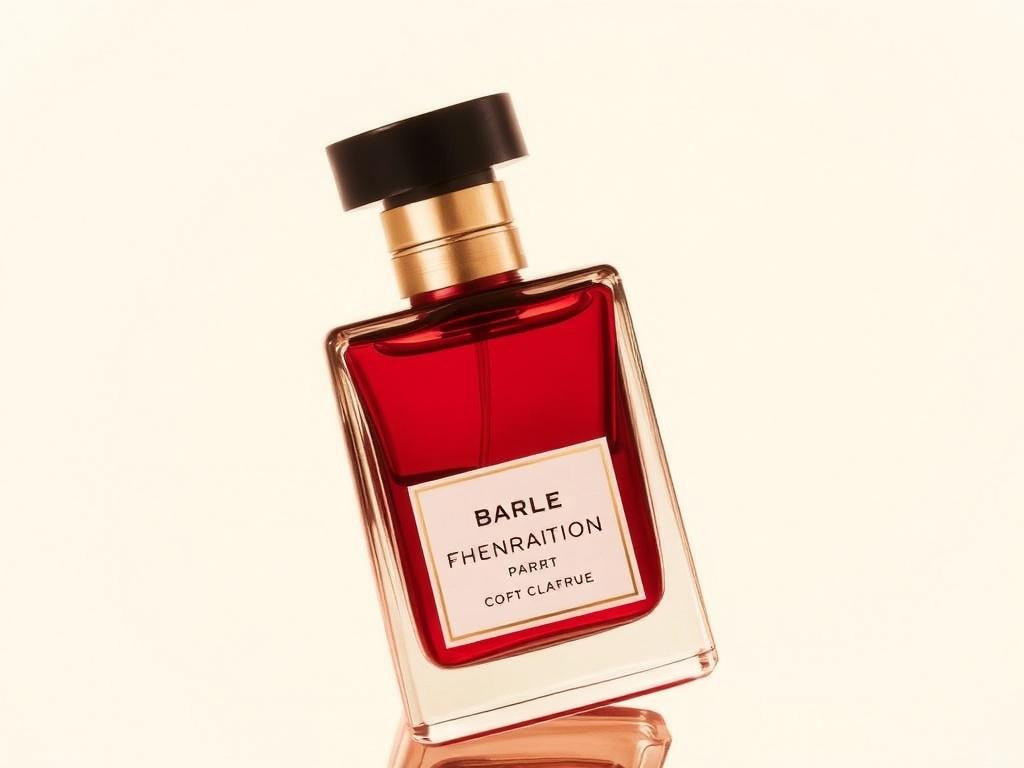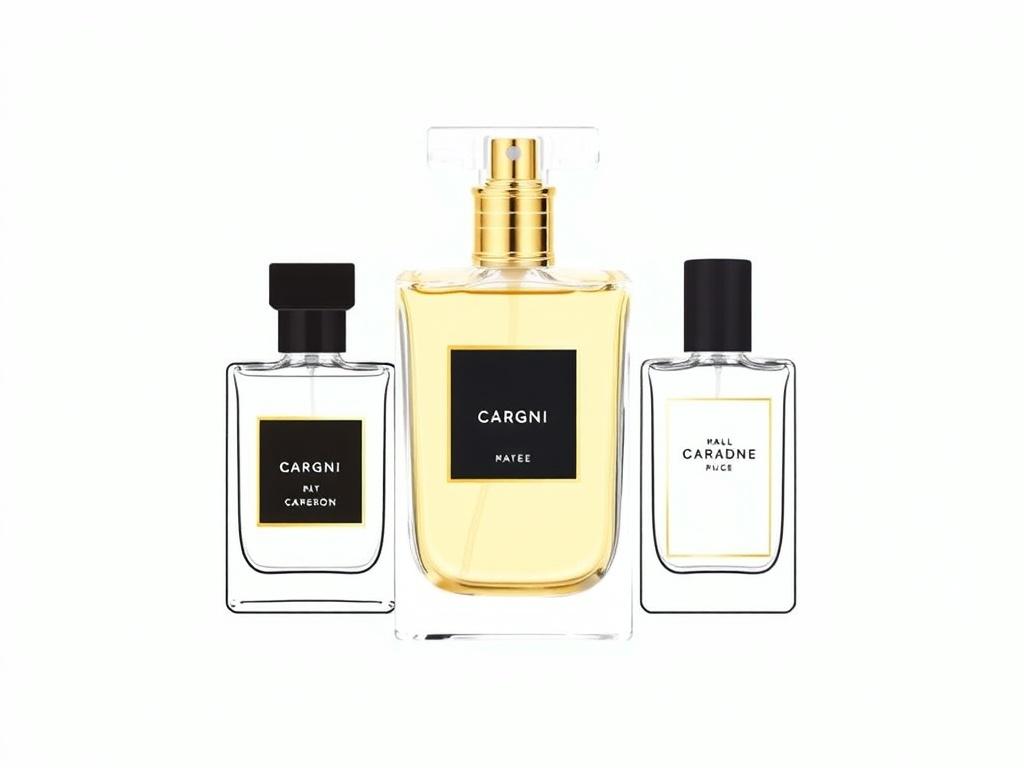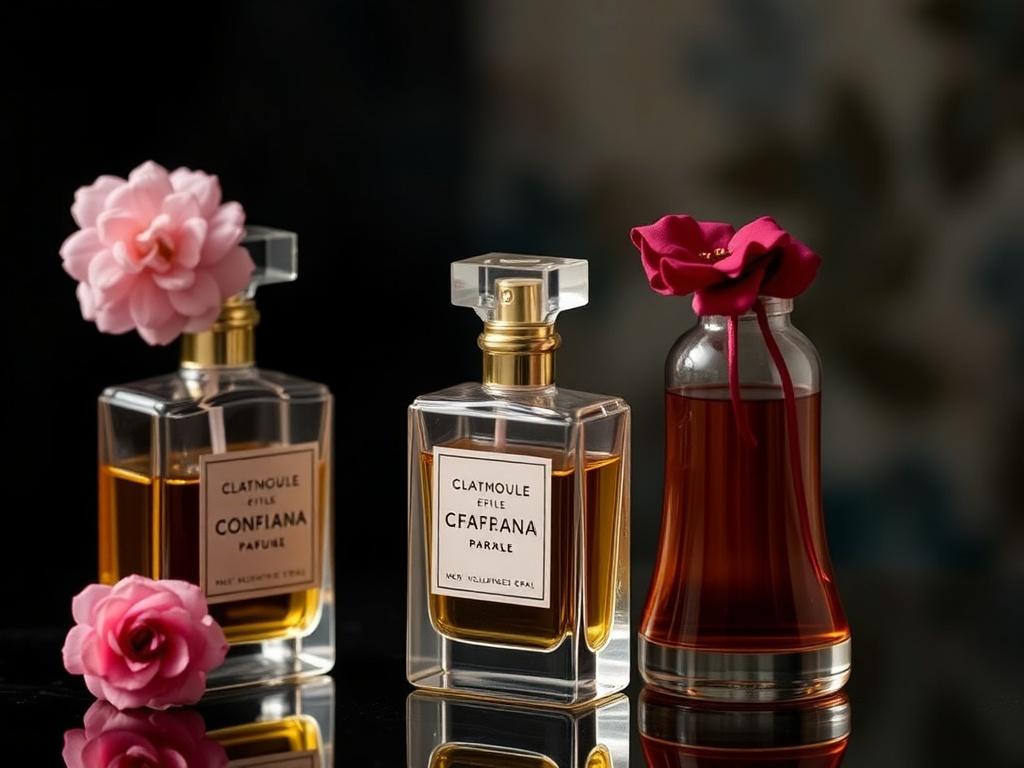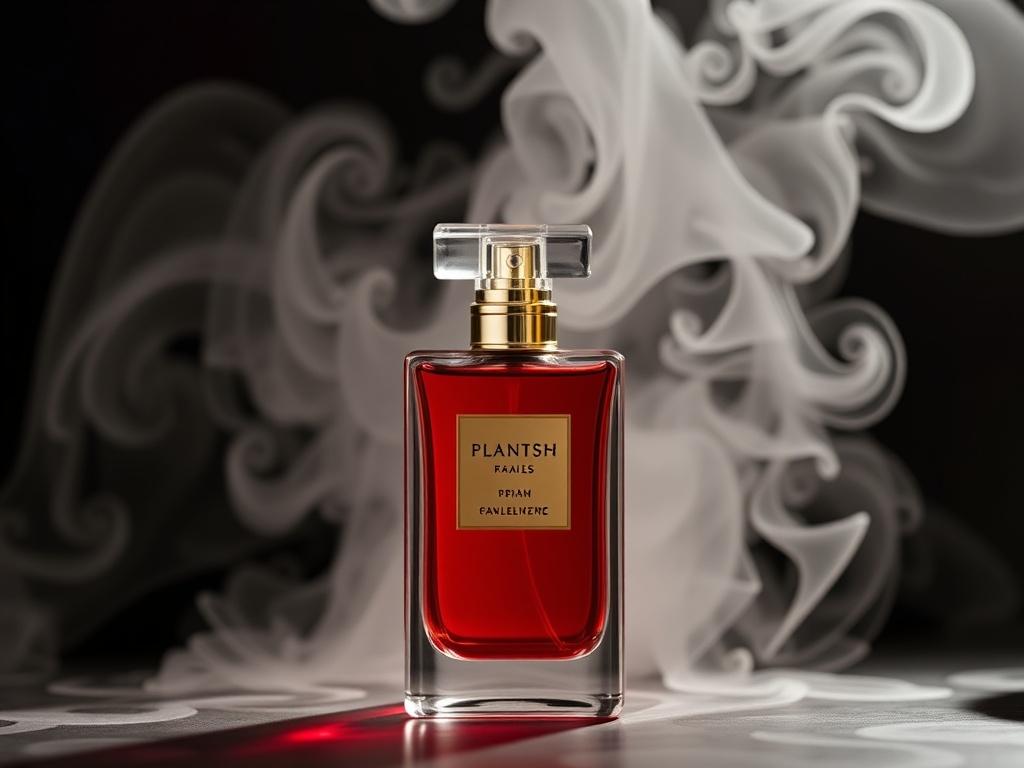SQLITE NOT INSTALLED
Welcome. If you have ever stood in front of a wall of perfume bottles, felt overwhelmed by swirl of scent, and wondered which one would say “this is me,” you’re in the right place. Choosing a perfume is part science, part art, and largely about self-expression. In this long, conversational guide I’ll walk you through the world of fragrances so you can discover how to choose a perfume that speaks for you—distinctly, confidently, and joyfully.
Whether you’re starting from scratch, rebuilding a fragrance wardrobe, or trying to find that signature scent, this article will equip you with simple rules, practical steps, and plenty of thoughtful ideas. We’ll explore fragrance families, notes and accords, skin chemistry, testing methods, season and occasion choices, longevity and concentration, ethical considerations, and creative techniques like layering and personalization. I’ll also include tables and checklists to help you make decisions and keep your choices organized.
Pour yourself a cup of tea (or a glass of water) and settle in. Smell is one of the most intimate and evocative senses. With a little knowledge and patience, your perfume can become a voice—soft, bold, or whimsical—that tells a story about who you are.
Why Fragrance Matters: The Power of a Scent That Speaks for You
We often underestimate how powerful scent is. A single aroma can evoke memories, trigger emotions, and change how others perceive us. Wearing a perfume that fits your personality or the mood you want to project is a subtle but potent form of communication. It’s like choosing how to dress or speak—except it works beneath the words.
Psychologists have long studied the link between scent and memory. The olfactory nerve connects directly to structures in the brain involved in emotion and memory, like the amygdala and hippocampus. That’s why a whiff of fragrance can instantly transport you back to a particular moment—your grandmother’s kitchen, a summer vacation, or a first date. Choosing a perfume that resonates with your past, present, or aspirations is a way to craft an emotional narrative that others will unconsciously pick up on.
But beyond memory, scent shapes first impressions. Studies show people form impressions about others’ personality traits—confidence, warmth, and competence—based in part on scent. A perfume that aligns with how you want to be perceived can complement your style and presence. The secret is finding a scent that feels authentic. When a fragrance matches your temperament, it doesn’t feel like “wearing something,” it feels like “being yourself.”
Fragrance as Identity and Communication
Some people choose a single “signature” scent and stick with it for years. Others enjoy rotating fragrances based on mood, season, or occasion. Both approaches are valid. What matters is intention: are you using perfume to feel comfortable, to stand out, to attract attention, or to create an aura of mystery? Your answers will guide your choices.
Think of perfume as an accessory that can be subtle or bold. A light, clean scent might speak to someone who wants to feel fresh and approachable. A deep woody or spicy scent might convey gravity and sophistication. Florals can radiate warmth and softness, while citrus and ozonic notes say energetic and modern. The list goes on—and the joy is in exploring.
The Basics: Understanding How Fragrance Is Built
Before you rush to sample bottles, it helps to understand the anatomy of a perfume. Most fragrances are composed of three layers of notes that unfold over time: top notes, heart (or middle) notes, and base notes. Together, these create a fragrance’s structure and life on your skin.
Top Notes: The First Impression
Top notes are what you smell first, immediately after applying a perfume. They are usually light, bright, and evaporate quickly. Citrus, light florals, herbs, and some light fruity notes commonly serve as top notes. Think of them as a perfume’s opening line—inviting but fleeting.
Heart Notes: The Personality
After the top notes fade, the heart notes emerge. These make up the core character of the fragrance and last longer than the top notes. Common heart notes include rose, jasmine, spices, and green notes. The heart is often where a perfume reveals its theme—romantic, fresh, spicy, or gourmand.
Base Notes: The Foundation
Base notes are rich, heavy scents that linger and provide depth. Common base notes include vanilla, amber, musk, patchouli, sandalwood, and leather. They anchor the perfume, contributing to longevity and the lingering impression people remember.
Accords and Olfactory Families
An accord is a blend of notes that together create a distinct scent impression—like a chord in music. Fragrances are grouped into families: floral, oriental, woody, fresh (citrus, aquatic), gourmand, and fougère, among others. Each family gives you an idea of the overall character:
- Floral: centered on flowers—rose, jasmine, tuberose.
- Oriental: warm, spicy, sweet—vanilla, amber, exotic resins.
- Woody: dry woods, moss, leather—sandalwood, cedar, vetiver.
- Fresh: citrus, green, aquatic—bergamot, lemon, sea notes.
- Gourmand: edible, sweet notes—caramel, chocolate, coffee.
- Fougère: lavender, oakmoss, coumarin—classic masculine accords.
Perfume Concentrations: How Strong Should Your Scent Be?
Perfumes come in different concentrations, which affects intensity and longevity. Here’s a simple guide to common concentrations you’ll encounter:
| Concentration | Typical Perfume Oil Percentage | Typical Longevity on Skin | Common Uses |
|---|---|---|---|
| Eau de Cologne (EDC) | 2–5% | 1–3 hours | Refreshing, light, daytime |
| Eau de Toilette (EDT) | 5–15% | 3–5 hours | Everyday wear, moderate intensity |
| Eau de Parfum (EDP) | 15–20% | 5–8 hours | Evening, special occasions |
| Parfum / Extrait de Parfum | 20–40% | 8+ hours | Signature scents, long-lasting presence |
Higher concentration doesn’t necessarily mean better—just different. A lighter concentration can be perfect for a workplace or casual daytime vibe, while an extrait might be ideal when you want a lasting impression. Keep context and personal comfort in mind when choosing concentration.
How to Test Perfumes Like a Pro
Testing perfumes is both a skill and an exercise in patience. Scent evolves on the skin; what smells amazing on a paper strip might not work with your body chemistry. Here’s a practical, step-by-step approach to get reliable results.
Step 1: Start With Clean, Unscented Skin
Perfume responds to oils and moisture on your skin. Test on clean, unscented skin if possible—avoid applying lotion, scented soap, or other fragrances beforehand. If you’re in a store, ask to try on your forearm or the inner wrist.
Step 2: Use Blotters Strategically
Paper blotters are useful for initial exploration. Spray once on a blotter to get a first impression of the top notes and initial character. But remember, blotters don’t show how the scent will interact with your body chemistry, so only use them for narrowing choices.
Step 3: Apply Sparingly and Give It Time
When testing on skin, use a single spray (or a dab) and wait. Don’t judge immediately. Give the perfume 10–30 minutes to settle into its heart notes, and 1–2 hours to see how the base evolves. If you want to compare two scents, keep them far apart—on different wrists or forearms—to avoid olfactory fatigue and cross-contamination.
Step 4: Sniff Your Wrist, Then Step Away
Smell your wrist once or twice, then walk away and come back later. Smelling constantly can lead to sensory adaptation, where your nose grows tired and you can no longer detect subtle differences. A short break helps reset your sense of smell.
Step 5: Test With Your Clothes and Hair
Some notes cling better to fabric or hair than to skin. If you’re considering a fragrance for daily wear, a small spritz on a scarf or the inside of a shirt can give you an idea how it will behave with clothing. But beware—certain perfumes can stain delicate fabrics.
Step 6: Try at Different Times and Temperatures
Fragrances smell different depending on body temperature and environment. A scent can bloom more on a warm day and sit muted on a cold one. If possible, test the perfume at least once in the conditions you expect to wear it—day vs. night, summer vs. winter.
Skin Chemistry: Why Perfumes Smell Different on Everyone

Skin chemistry plays a major role in how a perfume develops on your body. Factors affecting scent include natural skin oils, pH, diet, medications, hormonal changes, and even how much you sweat. This is why a perfume loved by a friend may not suit you.
Some tips for dealing with skin chemistry:
- If a fragrance turns sharp or unpleasant, try a different concentration (EDT instead of EDP) or blend it with a complementary unscented lotion to soften it.
- Moisturized skin typically holds fragrance longer. Apply a neutral, unscented moisturizer before spraying—this helps the perfume bind and last longer.
- Test perfumes multiple times over a few days to gather an accurate impression. Short experiments lead to misleading conclusions.
Choosing a Perfume Based on Personality
One of the most enjoyable ways to choose a perfume is by aligning scents with parts of your personality. Think of fragrance as an extension of your identity: playful, confident, romantic, adventurous. Below are some common personality archetypes and fragrance suggestions that tend to match them.
The Minimalist
If you prefer clean lines, quiet elegance, and simplicity, seek fresh, airy scents. Citrus, light aquatic notes, and soft musks are your allies. Look for fragrances that feel effortless and uncluttered—something that whispers rather than shouts.
The Romantic
Soft florals, powdery notes, and warm vanilla often appeal to romantics. Think rose paired with soft powdery notes and a gentle amber base. These scents evoke tenderness, warmth, and intimacy.
The Bold and Confident
If you want to make a statement, consider oriental, spicy, or woody fragrances. Patchouli, oud, saffron, leather, and heavy amber create presence. These scents can command attention without needing loud behavior—let the perfume do the talking.
The Playful and Bright
For exuberant personalities, citrus, fruity, and gourmand notes like mandarin, pineapple, or playful vanilla blends create a fun, youthful aura. These scents often feel joyful and approachable.
The Naturalist
If you love outdoors, gardens, and earthy vibes, lean into green, herbal, and woody scents. Vetiver, cedar, basil, and freshly cut grass notes can be grounding and resonate with a nature-loving temperament.
The Sophisticate
Clean, tailored scents with refined ingredients—iris, sandalwood, smooth musks, and subtle spices—suit polished, urbane personalities. These fragrances balance complexity with restraint.
Choosing by Occasion and Season
Perfume very much behaves like clothing; some scents suit warm sunny days, others are perfect for a cozy winter evening. Thinking seasonally and situationally makes your choices functional as well as expressive.
Seasonal Basics
Here’s a practical season-by-season approach:
- Spring: Floral and green fragrances bloom in spring. Light florals, delicate fruity florals, and green tea notes reflect new growth and freshness.
- Summer: Opt for citrus, aquatic, and light herbal scents. These feel uplifting and won’t overwhelm in heat.
- Autumn: Transition to warm spices, resinous woods, and gourmands. Amber, cinnamon, and smoky woods match the crisp air.
- Winter: Deep orientals, heavy woods, leathery and gourmand fragrances shine. They provide warmth and longevity in cold weather.
Occasion Guidelines
Consider the setting and who will be in it:
- Workplace: Choose subtle, clean scents that won’t overpower colleagues—soft musks, light florals, or mild citrus.
- Date Night: Opt for intimate, skin-close scents with warm bases—amber, vanilla, or soft florals that invite closer contact.
- Formal / Evening Events: Rich, sophisticated fragrances with depth—oud, tuberose, leather—create gravitas.
- Casual Outings: Fun and light fragrances—fruity or fresh florals—keep the vibe relaxed and friendly.
Creating a Fragrance Wardrobe
Instead of seeking one “perfect” perfume, many people find a small wardrobe of fragrances more satisfying. This gives you flexibility to match mood, season, and event. A typical wardrobe might include:
- A daily go-to: approachable, comfortable, and versatile.
- A signature scent: a slightly richer, recognizable perfume for when you want to stand out.
- A night-out or special-occasion perfume: deeper, longer-lasting, and more dramatic.
- A seasonal scent: a lighter summer option and a warming winter choice.
Building this wardrobe can be gradual. Collect samples and decants to test how different scents fit your life before committing to full bottles.
Practical Tips for Buying Perfume

Buying perfume can be thrilling and nerve-wracking. Here are practical tips to make wise choices and avoid buyer’s remorse.
Always Try Before You Buy
Whenever possible, test on skin. If you must buy online, buy from retailers with generous return policies, or order samples first.
Use Samples and Decants
Samples and decants are lifesavers. They let you live with a fragrance for days, not minutes. Many niche brands and boutiques offer small sprays for trial. Use these to see how a scent lasts and evolves with your chemistry.
Be Cautious with Marketing
Fragrance marketing—beautiful packaging and evocative descriptions—can be persuasive but doesn’t guarantee the scent will suit you. Use your nose, not the bottle, as the final judge.
Know When to Walk Away
If a perfume smells sharp, medicinal, or uncomfortably sweet on you, it’s okay to leave it. Not every fragrance will align with your chemistry or mood. Let the experience be informative rather than frustrating.
Common Ingredients and What They Convey
Understanding common ingredients helps you recognize recurring motifs across different fragrances. Here are popular notes and the impressions they commonly evoke:
| Note | Typical Impression | Common Uses |
|---|---|---|
| Bergamot | Bright, citrusy, sparkling | Top note in fresh and floral scents |
| Rose | Romantic, classic, floral | Heart note in many floral and oriental fragrances |
| Jasmine | Rich, sensual, white floral | Heart note in sensual and romantic perfumes |
| Vetiver | Earthy, smoky, green | Base note in woody fragrances |
| Sandalwood | Creamy, smooth, warm | Base note adding warmth and longevity |
| Vanilla | Sweet, comforting, gourmand | Base note in warm, sweet compositions |
| Patchouli | Earthy, resinous, slightly sweet | Used in oriental and woody blends |
| Oud | Resinous, smoky, leathery | Luxurious base note in many niche blends |
Ethics, Sustainability, and Allergens
Modern perfumery increasingly addresses sustainability and ethical sourcing. Natural ingredients can have environmental or social impacts, and synthetic molecules can reduce pressure on endangered botanicals. If these issues matter to you, here’s what to consider.
Sustainable and Ethical Practices
Look for brands that disclose sourcing, fair trade practices, or use sustainably harvested botanicals. Some brands use certified sustainable labs for ingredients like sandalwood or vetiver. Others invest in community programs where raw materials are sourced.
Naturals vs. Synthetics
Natural ingredients often provide complexity and depth, but they can be variable, expensive, and environmentally taxing. Synthetic ingredients offer consistency, unique molecules not found in nature, and can replicate scents without harming ecosystems. Both have a place. If you prefer natural fragrances, expect a higher price tag and possibly variable batches. If you prefer consistent performance at a lower environmental cost, synthetics are a great choice.
Allergens and Sensitivity
Some perfume ingredients—especially certain essential oils and synthetic musks—can irritate sensitive skin or trigger migraines. If you have sensitivities, patch test and consult ingredient lists. Dermatologists recommend avoiding direct application if you’re reactive; instead, consider light spritzes to clothing or hair where contact is limited.
How to Make a Perfume Last Longer on Your Skin

Longevity is a common concern. While fragrance concentration plays a role, you can use simple tricks to extend life:
- Moisturize first: Perfume binds to oils. Unscented lotion or a tiny dab of petroleum jelly on pulse points can anchor the fragrance.
- Layering: Use matching body wash, lotion, and perfume when available. Layering the same scent family increases presence without excess spraying.
- Pulse points: Apply to warm areas—wrists, inner elbows, neck base, behind knees—to help notes bloom.
- Hair and clothes: A light spritz on hair or scarf can extend longevity, but check for staining and avoid overheating hair with alcohol-based sprays.
- Store properly: Keep bottles upright in cool, dark places—excess heat and sunlight break down fragrance molecules.
Perfume Etiquette: When Less Is More
Scent is personal, but it can affect others. Strong perfumes in confined spaces—offices, trains, classrooms—can be intrusive. Use discretion and be mindful of allergies or sensitivities in shared environments. A good rule of thumb: if others can smell you from across the room, dial it back.
Layering and Personalization
Layering fragrances lets you create a unique scent signature. You can layer similar family scents (two different florals) or contrast (a citrus with a vanilla base) for complexity. Start subtle—spray one as a base and add tiny amounts of the second until you find the balance you like.
Many people enjoy experimenting: a woody base with a bright citrus top can feel modern and anchored; a spicy heart layered with a light floral softens intensity. Keep notes of successful combinations so you can reproduce them.
DIY Blending Basics
If you want to blend at home, begin with small quantities and low concentrations. Use dropper bottles and record ratios. A simple method is to combine a base (woody or amber), a heart (floral or spice), and a top (citrus or herbal), aiming for balance. Allow blends to macerate (rest) for a week to let the notes marry before final testing.
Storage and Shelf Life
Perfumes don’t last forever. Proper storage extends their life. Here’s how to keep your fragrances fresh:
- Store upright in a cool, dark place away from sunlight and heat (avoid windowsills and bathrooms with steam).
- Keep bottles sealed when not in use to limit oxidation.
- Smaller bottles used frequently are better than large bottles left open for years.
- Generally, most perfumes last 3–5 years; more stable, high-quality extracts can last longer. If the scent becomes sour, metallic, or drastically different, it may have degraded.
Buying Online vs. In-Store
Both have pros and cons. In-store testing gives immediacy and physical interaction with the scent. Online shopping offers convenience, wider selection, and often better prices. To combine advantages:
- Test in-store or order samples first, then buy full bottles online if you find a favorite.
- Buy from retailers with fair return policies or sample programs.
- Read reviews with a grain of salt—fragrance perception is highly personal. Look for reviews that describe notes rather than just “I love this.”
Common Mistakes and How to Avoid Them
Making a few classic mistakes can spoil the perfume-hunting experience. Here’s how to avoid them:
- Testing too many scents at once: Limit testing to 2–3 perfumes per session to avoid olfactory fatigue.
- Relying only on blotters: Always test a final shortlist on skin.
- Rushing: Give perfumes time to develop before deciding.
- Letting packaging dictate the choice: A pretty bottle doesn’t guarantee the fragrance suits you.
- Over-applying: One to three sprays are usually enough. You want to invite people in, not offend them.
Gender and Cultural Notes: Fragrance is Universal
The idea of “masculine” or “feminine” fragrances is changing. Many modern fragrances are marketed as unisex, focusing instead on mood and style. Don’t feel confined by marketing labels—if a scent resonates with you, wear it. What matters is how it makes you feel and how it fits your life.
Culture also shapes fragrance preferences. Scents considered luxurious in one culture might be everyday in another. Oud, for example, is extremely popular in Middle Eastern perfumery but might feel exotic in other contexts. Be mindful of cultural meanings and how perfume choices might be perceived in different settings.
How to Build Confidence With Your Scent
Wearing a perfume you love can boost confidence. To build that connection:
- Choose scents that reflect how you want to feel, not just trends.
- Start small when trying bold fragrances—wear them for short outings until you feel comfortable.
- Create rituals: spritzing before an important meeting or Sunday brunch can become a confidence cue.
Examples and Archetypal Picks
Below are fictional archetypes with suggested scent directions and example notes. These are starting points—each fragrance within these categories will have its own personality.
| Archetype | Fragrance Direction | Example Notes |
|---|---|---|
| The Urban Minimalist | Fresh, clean, understated | Bergamot, green tea, musk |
| The Eternal Romantic | Soft, floral, powdery | Rose, iris, vanilla |
| The Worldly Sophisticate | Complex woody-oriental | Patchouli, oud, saffron |
| The Joyful Free Spirit | Fruity floral, playful | Mandarin, peach, peony |
| The Grounded Naturalist | Green, earthy, herbal | Vetiver, cedar, basil |
Case Studies: How People Discovered Their Perfume
Stories help. Here are three short fictionalized case studies illustrating how people found scents that speak for them.
Case 1: Laura — The City Librarian
Laura loved quiet afternoons and sunlit stacks. She wanted a scent that was gentle and intelligent—something that hinted at warmth without being heavy. She tried dozens of perfumes before discovering a soft rose-vanilla with a powdery iris heart and a subtle musk base. It felt like her: refined, approachable, and calming. She wears it on days she wants comfort and quietly enjoys people’s comments about the “lovely light scent.”
Case 2: Marco — The Chef
Marco wanted something bold but edible-sounding—a scent that matched his culinary creativity. He gravitated toward gourmand notes: dark chocolate, toasted coffee, and a warm amber base. Layering a touch of fresh citrus on top kept it bright, and the result matched his persona: warm, creative, and slightly indulgent. His scent became part of his kitchen signature.
Case 3: Aisha — The Traveler
Aisha needed a versatile scent that traveled well. She chose a woody-oriental with a resinous amber base and saffron heart—notes that felt exotic but adaptable. It connected with places she loved and memories of markets and spice stalls. Her perfume became a portable memory bank of journeys.
DIY: Creating a Simple Personal Scent at Home
If you enjoy hands-on projects, making a simple personal scent can be rewarding. Here’s a beginner-friendly method to create a small blend using essential oils and a carrier alcohol.
What You’ll Need
- Small glass roller bottle (10 ml)
- Perfumer’s alcohol or vodka (high-proof, neutral-smelling)
- Essential oils (a top, heart, and base note)
- Pipettes, labels
Basic Ratio and Steps
Start with a 15–20% total essential oil concentration for a strong perfume. A simple ratio is 30% top notes, 50% heart notes, and 20% base notes. For a 10 ml bottle at 20% concentration, you’ll use 2 ml total essential oils.
- Choose your oils (example: bergamot for top, jasmine absolute for heart, sandalwood for base).
- Add oils to the bottle using pipettes according to ratio—e.g., 0.6 ml bergamot, 1.0 ml jasmine, 0.4 ml sandalwood.
- Fill the rest of the bottle with perfumer’s alcohol, leaving a little headspace.
- Shake gently and label with ingredients and date.
- Let the blend macerate for at least a week—ideally three weeks—shaking daily. Then test and adjust if needed (add tiny drops to modify).
Note: Essential oils can be potent and sensitizing. Do a patch test and never apply undiluted essential oils directly to skin.
Troubleshooting: When a Perfume Doesn’t Work
Sometimes a perfume simply doesn’t sit right. Here are common issues and fixes:
- It smells too sharp: Try a lower concentration (EDT), or apply on clothing rather than skin. A dab of unscented moisturizer can soften top notes.
- It fades too quickly: Apply to moisturized skin or layer with matching products. Consider a higher concentration.
- It becomes sour or metallic on your skin: That’s likely a mismatch with skin chemistry. Test other families or consider synthetic-forward compositions that might behave differently.
- You like it on blotter but not on skin: Live with a sample for a day to confirm—many scents change completely after oxidation and contact with skin.
Keeping a Fragrance Journal
A perfume journal helps you remember what you tested and how fragrances reacted on your skin over time. Include columns like:
- Date
- Fragrance name and concentration
- Initial impression (top notes)
- 10–30 minute impression (heart)
- 2–4 hour impression (base)
- Longevity and sillage (projection)
- Context—season, occasion, how it made you feel
Keeping notes prevents repeated mistakes and helps you identify patterns—such as preferring certain base notes or reacting poorly to specific synthetics.
Perfume as Memory Crafting
People often ask whether they should pick scents tied to specific memories or deliberately choose something new. There’s no single correct approach. Some love scent as nostalgia; others prefer scents that signal transformation—new relationships, careers, or life chapters. Both are powerful. You can even rotate scents to curate chapters: one perfume for home and family memories, another for work milestones, and another for travel and adventure.
Final Checklist: How to Choose a Perfume That Speaks for You
Here’s a compact checklist to guide a confident purchase. Use this step-by-step to narrow choices and make a considered selection.
| Step | Action | Why It Matters |
|---|---|---|
| 1 | Identify mood/personality you want to express | Guides family and note preference |
| 2 | Set context: daily, night, seasonal | Determines concentration and vibe |
| 3 | Test 2–3 scents per session, on skin | Avoids olfactory fatigue |
| 4 | Use samples to wear for days | Reveals true longevity and evolution |
| 5 | Consider ethics/allergens | Matches personal values and sensitivity |
| 6 | Decide on concentration | Controls intensity and longevity |
| 7 | Store properly | Preserves scent quality |
Closing Thoughts: Let Your Scent Be an Invitation
At its best, a perfume is an invitation. It invites curiosity, nostalgia, conversation, or simply quiet pleasure. Choosing one that speaks for you is less about following rules and more about exploration and honest self-reflection. Some of my favorite fragrance experiences have come from experiments, accidents, and generous sampling. Give yourself permission to explore slowly, to change your mind, and to let scent evolve with you across seasons and life stages.
If you leave with one actionable idea: start small. Pick one family you like—floral, woody, fresh—and test a handful of scents over several days. Record how each feels and how it lasts. Over time you’ll assemble a collection that doesn’t just smell good—it says something true about you.
Additional Resources and Next Steps
Want to dive deeper? Try visiting an indie perfumer for a bespoke consultation, explore sample subscription services that send curated miniatures, or take a beginner class in perfumery to understand raw materials. The more you learn about notes and composition, the more confident you’ll become in selecting and blending scents that genuinely represent you.
Thank you for reading. I hope this guide helps you enjoy the sensory adventure of finding a perfume that truly speaks your name.
Quick Tip Summary
- Test perfumes on skin, not just blotters.
- Limit 2–3 trials per session to avoid olfactory fatigue.
- Use samples and decants to live with a scent for days.
- Choose concentrations and notes that match context and personality.
- Store fragrances in cool, dark places to preserve them.




